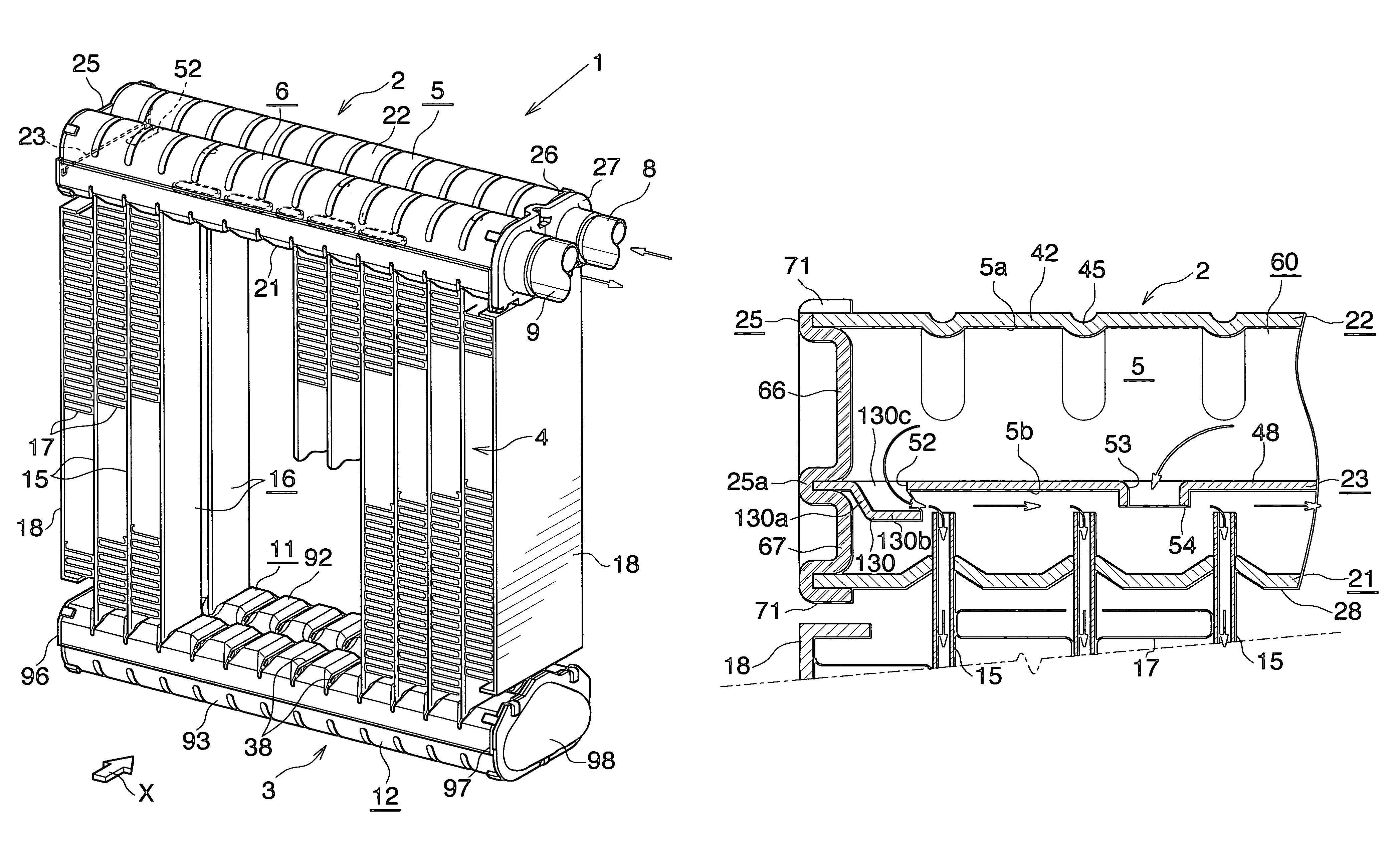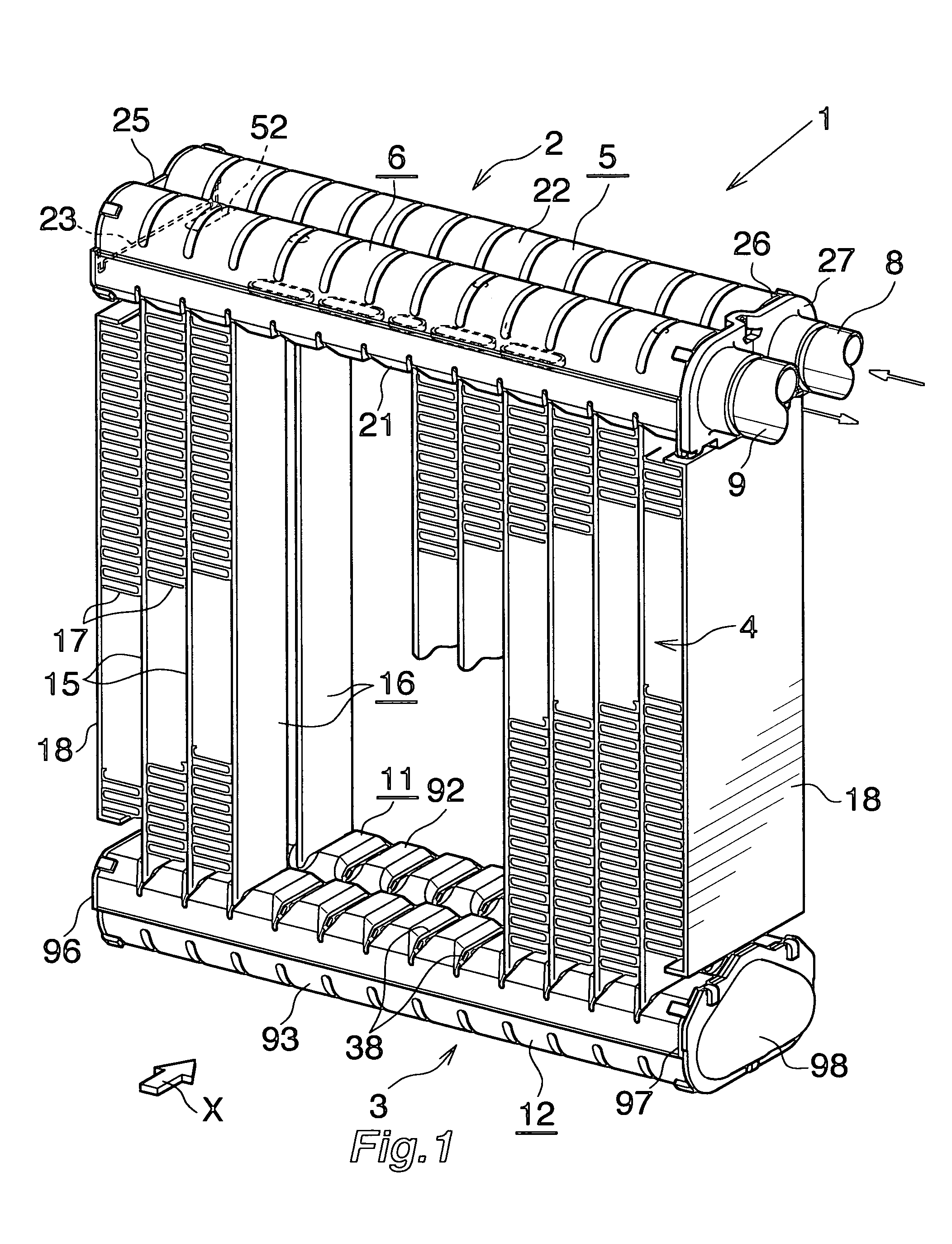Heat exchanger
a technology of heat exchanger and partition member, which is applied in the direction of indirect heat exchanger, refrigeration components, lighting and heating apparatus, etc., can solve the problems of insufficient degree of difficulty in circulating refrigerant, and insufficient uniformity of outflow air temperature, so as to reduce the number of parts, improve the reliability of the joint between the partition member and the cap, and the effect of reducing the number of parts
- Summary
- Abstract
- Description
- Claims
- Application Information
AI Technical Summary
Benefits of technology
Problems solved by technology
Method used
Image
Examples
Embodiment Construction
[0043]A preferred embodiment of the present invention will next be described with reference to the drawings. The embodiment is of a heat exchanger according to the present invention that is applied to an evaporator of a car air conditioner using a chlorofluorocarbon-based refrigerant.
[0044]In the following description, the term “aluminum” includes aluminum alloys in addition to pure aluminum. Also, in the following description, the downstream side (a direction represented by arrow X in FIGS. 1, 3, and 4) of an air flow through air-passing clearances between adjacent heat exchange tubes will be referred to as the “front,” and the opposite side as the “rear.” The left-hand and right-hand sides of FIG. 2 will be referred to as “left” and “right,” respectively.
[0045]Further, the same reference numerals are used throughout the drawings to refer to the same portions and members, and their repeated descriptions are omitted.
[0046]FIGS. 1 and 2 show the overall configuration of an evaporator...
PUM
 Login to View More
Login to View More Abstract
Description
Claims
Application Information
 Login to View More
Login to View More - R&D
- Intellectual Property
- Life Sciences
- Materials
- Tech Scout
- Unparalleled Data Quality
- Higher Quality Content
- 60% Fewer Hallucinations
Browse by: Latest US Patents, China's latest patents, Technical Efficacy Thesaurus, Application Domain, Technology Topic, Popular Technical Reports.
© 2025 PatSnap. All rights reserved.Legal|Privacy policy|Modern Slavery Act Transparency Statement|Sitemap|About US| Contact US: help@patsnap.com



